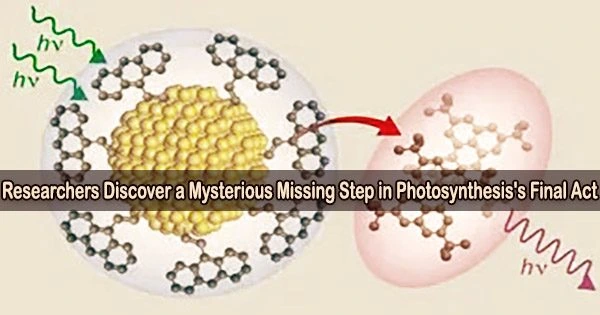Life on Earth is shaped and sustained in large part by photosynthesis, although many parts of the process are still unknown. How Photosystem II, a protein complex found in plants, algae, and cyanobacteria, uses energy from sunlight to divide water and create the oxygen we breathe is one such unsolved riddle.
Now researchers from the Department of Energy’s Lawrence Berkeley National Laboratory and SLAC National Accelerator Laboratory, together with collaborators from Uppsala University and Humboldt University and other institutions have succeeded in cracking a key secret of Photosystem II.
Using SLAC’s Linac Coherent Light Source (LCLS) and the SPring-8 Angstrom Compact free electron LAser (SACLA) in Japan, they captured for the first time in atomic detail what happens in the final moments leading up to the release of breathable oxygen. The data reveals a previously unseen intermediate chemical step.
The findings, which were released today in Nature, provide insight into how photosynthesis has evolved naturally and are assisting scientists in creating artificial photosynthetic systems that mimic photosynthesis in order to capture solar energy and transform carbon dioxide into hydrogen and carbon-based fuels.
“The more we learn about how nature does it, the closer we get to using those same principles in human-made processes, including ideas for artificial photosynthesis as a clean and sustainable energy source,” said co-author Jan Kern, a scientist at Berkeley Lab.
Co-author Junko Yano, also at Berkeley Lab, said, “Photosystem II is giving us the blueprint for how to optimize our clean energy sources and avoid dead ends and dangerous side products that damage the system. What we once thought was just fundamental science could become a promising avenue to improving our energy technologies.”
Bases loaded
During photosynthesis, a cluster of four manganese atoms and one calcium atom joined by oxygen atoms known as Photosystem II’s oxygen-evolving core facilitates a sequence of difficult chemical events that act to split apart a water molecule to liberate molecular oxygen.
It’s really going to change the way we think about Photosystem II. Although we can’t say we have a unique mechanism based on the data yet, we can exclude some models and ideas people have proposed over the last few decades. It’s the closest anyone has ever come to capturing this final step and showing how this process works with actual structural data.
Professor Uwe Bergmann
When the core is exposed to sunlight, it goes through four stable oxidation states, known as S0 through S3. On a baseball field, S0 would be the start of the game when a player on home base is ready to go to bat. S1-S3 would be players on first, second, and third.
The player on the field moves forward one base each time the batter connects with the ball or the complex absorbs a photon of sunlight. The player slides into home plate once the fourth ball is hit, scoring a run or, in the case of Photosystem II, releasing one molecule of breathable oxygen.
In their investigations, the researchers excited cyanobacterial samples with optical light and then probed them with ultrafast X-ray pulses from LCLS and SACLA to examine this center. The information made the cluster’s atomic structure and its chemical surroundings clear.
A homerun
The transitory state, or S4, where two oxygen atoms link and an oxygen molecule is released, was observed by scientists using this method for the first time. The information demonstrated that this reaction includes previously unseen extra steps.
“Other experts argued that this is something that could never be captured,” said co-author Uwe Bergmann, a scientist and professor at the University of Wisconsin-Madison. “It’s really going to change the way we think about Photosystem II. Although we can’t say we have a unique mechanism based on the data yet, we can exclude some models and ideas people have proposed over the last few decades. It’s the closest anyone has ever come to capturing this final step and showing how this process works with actual structural data.”
The team has conducted a number of studies over the previous ten years; the new study is the most recent. In earlier studies, the photosynthetic cycle’s distinct stages were observed at the temperature at which it naturally takes place.
“Most of the process that produces breathable oxygen happens in this last step,” said co-author Vittal Yachandra, a scientist at Berkeley Lab. “But there are several things happening at different parts of photosystem II and they all have to come together in the end for the reaction to succeed. Just like how in baseball, factors like the location of the ball and the position of the basemen and fielders affect the moves a player takes to get to home base, the protein environment around the catalytic center influences how this reaction plays out.”
Brighter X-rays for a brighter future
The scientists intend to carry out tests that will take many more pictures of the process in light of these findings.
“There are still things happening in between that we could not catch yet,” Kern said. “There are more snapshots we really want to take which would bridge the remaining gaps and tell the whole story.”
To do so, they need to push the quality of their data even further. These measurements have historically been difficult since the samples’ X-ray signals are weak and the X-ray pulse rates produced by current X-ray lasers like LCLS and SACLA are insufficient.
“It took quite some effort to optimize the setup, so we couldn’t collect all the data we needed for this one publication in a single experiment,” said co-author and SLAC scientist Roberto Alonso-Mori. “These results actually include data taken over six years.”
The repetition rate will increase dramatically from 120 pulses per second to as much as a million pulses per second when an LCLS upgrade, known as LCLS-II, goes online later this year.
“With these upgrades, we will be able to collect several days’ worth of data in just a few hours,” Bergmann said. “We will also be able to use soft X-rays to further understand the chemical changes happening in the system. These new capabilities will continue to drive this research forward and shed new light on photosynthesis.”
















